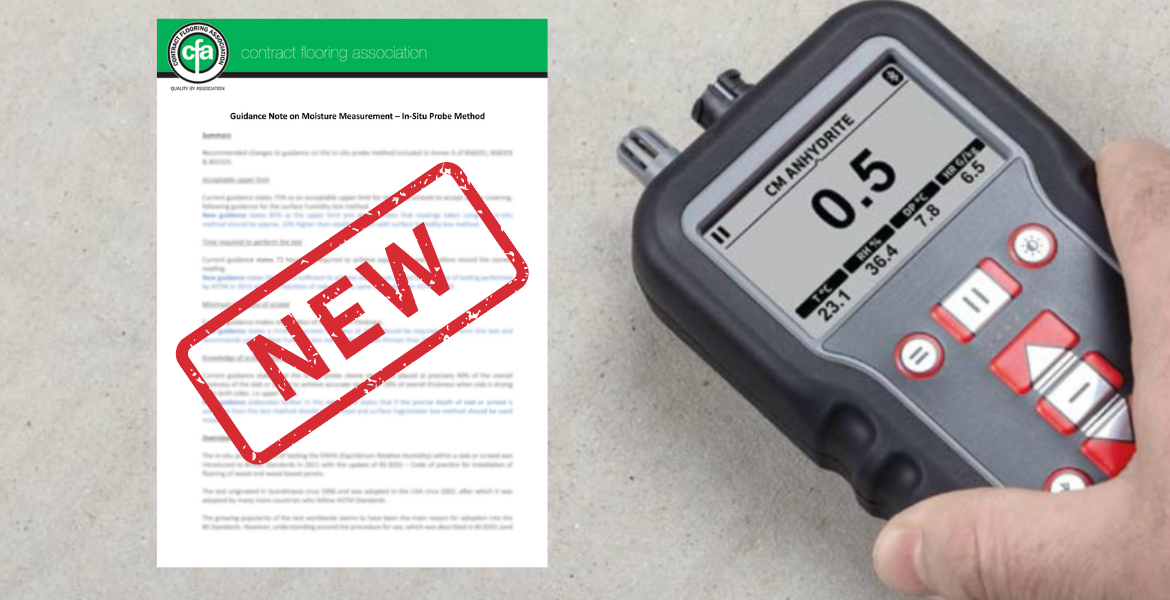

Richard Catt, CFA CEO, discusses how a new guidance note on moisture measurement is the latest in a string of recent member benefits, following the CFA principle of the “responsible NO” by encouraging members to delay installation until they can be certain a floor will be successful.
It’s been a bumper year for CFA bringing new benefits to members.
So far this year we have updated our training guide, launched the 2024 version of our Sustainability Guide, introduced a new news platform www.floorscape.org.uk and launched our latest campaign “Clear Our Workspace” with a toolkit to help members obtain correct site conditions. The Clear Our Workspace campaign is underpinned by the “responsible No”. Our message of support to members for delaying installation until they know a floor will be successful.
If that wasn’t enough, CFA and our members have also completed work on a new guidance note (GN) relating to the in-situ probe method of moisture measurement. A number of members approached the CFA as far back as December 2022 and suggested that it needed updating and a fuller understanding was now available.
After initial consultation through our Manufacturers and Distributors Committee, CFA responded by creating a subcommittee of experts who worked on the document across the following eighteen months creating draft documents for discussion and improvement. Eventually, a final version was presented for wider approval and work was completed in the second half of 2024. The document launched in July 2024 redefines key elements for the in-situ probe method with some very carefully considered and easily digested new parameters for the main measurements and how they should be taken.
This creates a much better and clearer understanding that is summarised at the start of the document but provides all the background data and research the further on that you read. In terms of moisture measurement, and one of the most commonly used methods of testing on site, it is perhaps the biggest change in at least a decade. It brings clarity, a more practical and technically accurate understanding, and ensures consistency between the results for a surface hygrometer test and in-depth probe method.
The full document is available through the Member Area of the CFA website and will be integrated into the next version of the CFA Guide to Contract Flooring. Acting as supplementary information in the meantime, if things run true to form, it is likely to appear in British Standards as they are updated. That would be consistent with a number of other technical innovations supported by the CFA in the past including the original introduction of the in-depth probe method into standards, and a specification for a flooring grade of plywood that is also now widely adopted.
I am delighted that the CFA could once again show its value to members and the industry by acting as the industry vehicle for debate, development and finally publication of this work. But as ever, I would like to thank and acknowledge all those from within membership that contributed. The CFA are the leading body and voice of the contract flooring industry, and our work in areas such as technical development of flooring standards showcases that perfectly.
This guidance note is also indirectly of value to any specifiers who are engaging with a CFA member. Equipped with the latest technical guidance, CFA members are well positioned to deliver high-performance, lasting flooring installations.
If you want access to this guidance note, visit the General Guidance section of the CFA Member Area. For further information about our work, or an application pack outlining the benefits of membership, please contact the CFA offices on 0115 941 1126, email info@cfa.org.uk or apply online at www.cfa.org.uk. To specify a CFA member search our website directory for a solution to your flooring design needs.